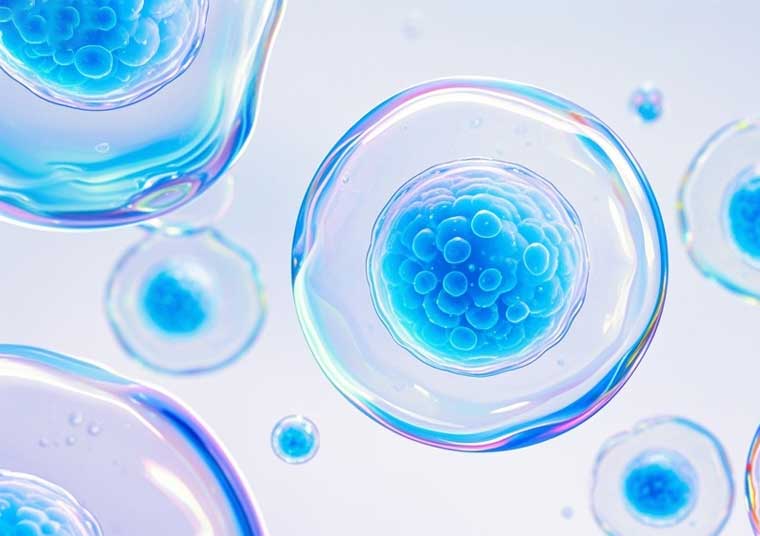 Go Back To Menu
Go Back To Menu
In recent years, the field of stem cell research has achieved continuous breakthrough progress, demonstrating great potential from basic science to clinical applications. In May 2025, multiple research teams around the world released important findings, marking that this field is accelerating toward a new stage of industrialization and precision medicine.

On May 11, 2025, a team of Chinese scientists announced the completion of the world’s first clinical trial of "autologous stem cell-induced corneal regeneration" (Source: Sina Finance). This technique extracts oral mucosa stem cells from patients, differentiates them for 21 days in a directed culture, and then transplants them into the damaged cornea, successfully restoring vision in six patients with total corneal blindness. Notably, compared with traditional allogeneic transplantation, this method avoids immune rejection and reduces costs by about 60%. The project leader revealed that the technology has passed the National Medical Products Administration’s green channel approval and is expected to enter multi-center clinical trials in 2026.
At the same time, Keio University and Kyoto University in Japan jointly developed "iPS cell-derived myocardial patches," which completed their first humanitarian use. A patient suffering from heart failure caused by myocardial infarction received a 4cm×6cm engineered myocardial tissue transplant, improving the left ventricular ejection fraction from 28% to 41%. This patch was cultivated from patient-specific iPS cells and, after implantation, was able to synchronize with the host’s heartbeat and secrete angiogenic factors.
The "stem cell 3D bioprinting system," jointly developed by U.S. biotechnology company Vertex and CRISPR Therapeutics, has attracted industry attention. This system can complete the entire process from cell extraction to organ prototype construction within 48 hours, with a printing accuracy of 20 microns—15 times more efficient than traditional methods. Functional printing tests of mouse liver tissue have been completed, and human liver tissue clinical trials are planned to begin in the third quarter of 2025.
Meanwhile, Chinese research teams have made breakthroughs in large-scale cultivation. The Guangzhou Institute of Biomedicine and Health, Chinese Academy of Sciences, developed a "serum-free microcarrier culture system" that increased the expansion efficiency of mesenchymal stem cells by 230 times compared to traditional methods, while maintaining genomic stability. This technology has already been applied in a Beijing tertiary hospital’s osteoarthritis treatment project, with a single batch meeting treatment needs for 500 patients.

In April 2025, the World Health Organization released a new version of the "International Guidelines for Clinical Research on Stem Cells," which for the first time clarified the application boundaries of gene-edited stem cells. The new rules require all genetic modifications to be traceable and reversible, and they established a globally unified coding system for stem cell products. During the same period, the European Union passed the "Joint Procurement Agreement for Advanced Therapy Medicinal Products," incorporating stem cell therapies into the European health insurance mutual assistance system.
The latest "Assessment Report of Registered Institutions for Clinical Research on Stem Cells" released by China’s National Health Commission showed that 103 institutions nationwide have passed the new GCP certification. Notably, the new regulations strengthened the "risk-based classification management" system, shortening the approval period for autologous stem cell therapies to 90 days, while allogeneic products require additional genomic stability tracking.
According to Bloomberg New Energy Finance statistics, global financing in the stem cell field reached USD 7.8 billion in the first quarter of 2025, a year-on-year increase of 42%. Among these, Chinese companies accounted for 37% of the financing events, mainly focused on organ-on-chip and organoid culture subfields. A Shenzhen biotechnology company developing a "fully automated stem cell preparation workstation" raised RMB 1.2 billion in its Series B financing round. Its integrated design can reduce cell processing costs to RMB 150 per dose.
It is worth noting that insurance institutions have started participating in risk-sharing. UnitedHealth Group in the U.S. launched "stem cell therapy efficacy insurance," promising an 80% refund if treatment outcomes fail to meet expectations. This innovative financial product is considered likely to accelerate the commercialization of stem cell technologies.
Despite significant progress, the stem cell field still faces three core challenges: first, controlling cell heterogeneity, as the highest differentiation purity achieved so far is only 92%; second, the lack of comprehensive long-term safety data after transplantation; and third, the need for unified quality control standards in large-scale production. The "single-cell metabolomics monitoring program" proposed by the Harvard Stem Cell Institute may provide a breakthrough, as this technology can track the metabolic states of up to 100,000 single cells in real time.
At the 2025 International Society for Stem Cell Research annual meeting, it was revealed that the next-generation technologies will focus on the integration of "spatiotemporally specific differentiation induction" and "intelligent biomaterial scaffolds." The Max Planck Institute in Germany showcased a light-controlled gene switch system, capable of precisely regulating stem cell differentiation timing using near-infrared light, which successfully achieved on-demand differentiation of different neuronal subtypes in animal experiments.
From the laboratory to the clinic, stem cell technology is reshaping the boundaries of modern medicine. With the deep integration of interdisciplinary fields and the continuous optimization of regulatory systems, the global stem cell therapy market is expected to exceed USD 100 billion by 2030, providing new solutions for the treatment of major diseases. As Nobel Prize in Physiology or Medicine laureate Professor Shinya Yamanaka stated: "We are witnessing the historic moment when regenerative medicine is transforming from science fiction into routine healthcare."